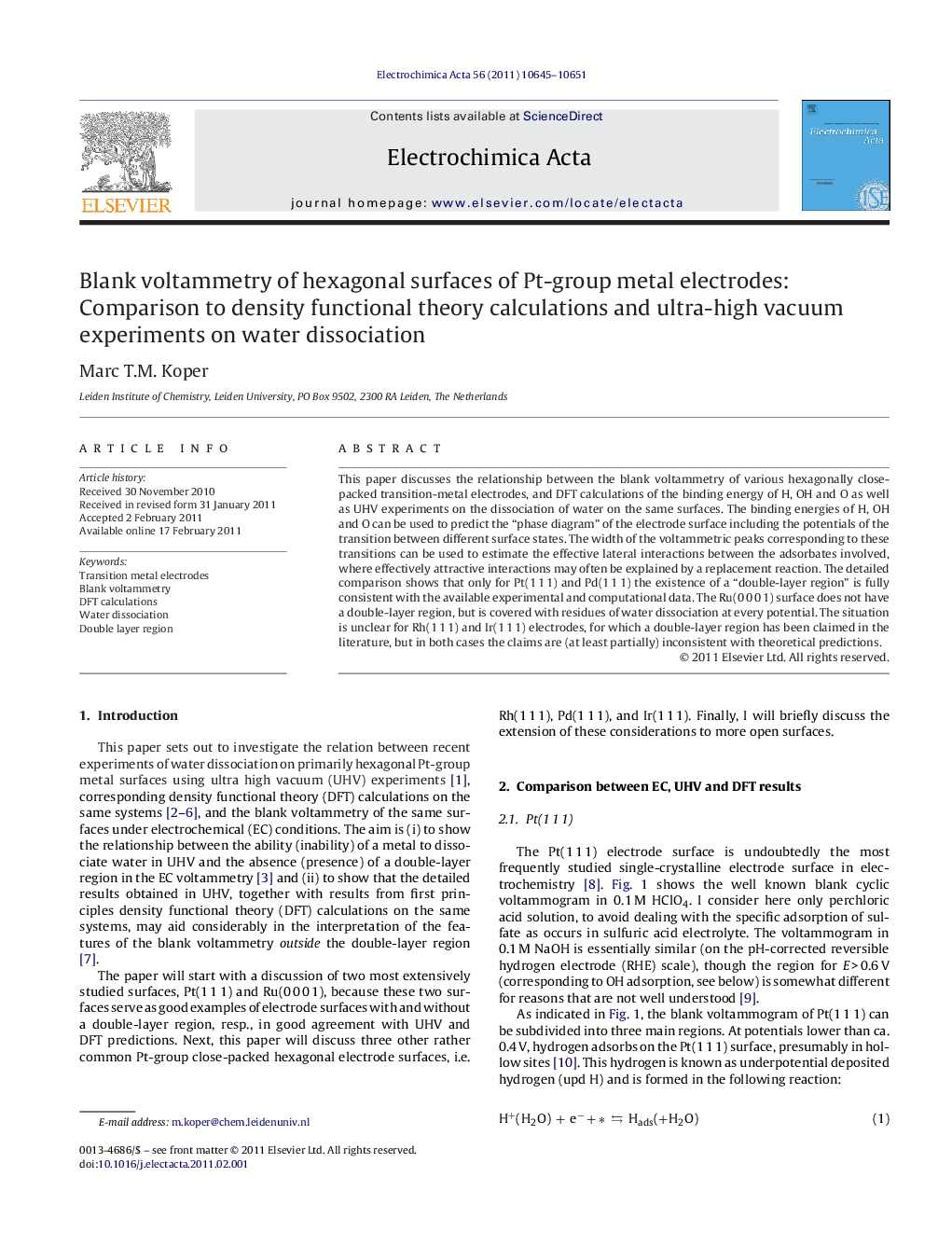| کد مقاله | کد نشریه | سال انتشار | مقاله انگلیسی | نسخه تمام متن |
|---|---|---|---|---|
| 190122 | 459692 | 2011 | 7 صفحه PDF | دانلود رایگان |

This paper discusses the relationship between the blank voltammetry of various hexagonally close-packed transition-metal electrodes, and DFT calculations of the binding energy of H, OH and O as well as UHV experiments on the dissociation of water on the same surfaces. The binding energies of H, OH and O can be used to predict the “phase diagram” of the electrode surface including the potentials of the transition between different surface states. The width of the voltammetric peaks corresponding to these transitions can be used to estimate the effective lateral interactions between the adsorbates involved, where effectively attractive interactions may often be explained by a replacement reaction. The detailed comparison shows that only for Pt(1 1 1) and Pd(1 1 1) the existence of a “double-layer region” is fully consistent with the available experimental and computational data. The Ru(0 0 0 1) surface does not have a double-layer region, but is covered with residues of water dissociation at every potential. The situation is unclear for Rh(1 1 1) and Ir(1 1 1) electrodes, for which a double-layer region has been claimed in the literature, but in both cases the claims are (at least partially) inconsistent with theoretical predictions.
Research highlights
► Prediction of double layer region of hexagonal transition metal electrode surfaces from DFT calculations.
► Pt(1 1 1) and Pd(1 1 1) have a double layer region.
► Ru(0 0 0 1) does not have a double layer region
► For Rh(1 1 1) and Ir(1 1 1) the situation is not clear: double layer is unlikely based on DFT but is still often assumed experimentally.
Journal: Electrochimica Acta - Volume 56, Issue 28, 1 December 2011, Pages 10645–10651